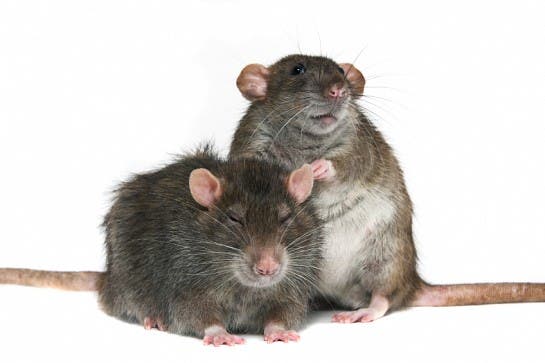Norwegian rats know how to keep their friends close. A new study found they reward other rats for their help even though there’s no immediate gain at hand as a result of this behavior. Called direct reciprocation, this is the first time something like this has been recorded by science outside human interactions.
Help a brother out

Sure there are many animals that assist and cooperate with another, including rats of course, but until now we had yet to seen any non-human animal reward a peer for his help. At least, we’ve yet to see truly compelling evidence, not just some “accidents”. At first glance, it might not seem like such a big deal. If you study the framework closer, however, you’ll then see that reciprocation and altruism are very complex cognitive behaviors. Some of the necessary psychological ingredients for reciprocation include: numerical quantification, time estimation, delayed gratification, detection and punishment of cheaters, analysis and recall of reputation, and inhibitory control. Evidence of reciprocation in the animal kingdom has been scarce and far from conclusive, but a team at University of Bern in Switzerland wanted to test this long standing conundrum.
The researchers thought of Norwegian rats as good candidates, since they’re rather socially intelligent and easy to observe. Their experiments were based on exploiting one of the rats’ biggest weakness – bananas! Female rats were introduced in the experimental chamber in pairs, and each would take turns either sitting in a cage with nothing to interact with or in an enclosure with two sticks. One stick would send the caged rat some tasty bananas, while the other would send the not so tasty carrots. This way, the receiving rat could recognize the offering rat as being very helpful (bananas!) or just plain helpful (eat your veggies — meh).
Then the rats would switch roles – the helped was now the helper. So the rats on the receiving end were now able to pull on a stick that would deliver cereal flakes to a certain helper. The rats that had given bananas generally received cereal more quickly and more often than carrot-givers. In the same vein, the rats that had given carrots got cereal less often than the banana-givers did, according to Ralph Martins writing for National Geographic. Findings appeared in the journal Biology Letters.
Is what we’re seeing a genuine example of direct reciprocation? Michael Taborsky, a behavioral ecologist at the University of Bern in Switzerland, believes this is the case. “Two elements are involved: recognizing an individual, and responding to the quality of service,” Taborsky says.
Both of these elements were proven and documented previously in rats, but this only means that it’s possible and not quite a genuine proof per se. Thomas Zentall, an animal behaviorist at the University of Kentucky in Lexington, thinks on the other hand that the rats simply associate the helper with the food. In their minds, according to Zentall, pulling on the stick when the banana-giver is present might bring bananas. Back to Taborsky, he says that this is highly unlikely since rats were shown to clearly distinguish between delivering food to others or to themselves.
While researching this article, I ran across another possible example of reciprocal altruism in the animal kingdom. In their book, “From Monkey Brain to Human Brain: A Fyssen Foundation Symposium”, the authors discuss various possible examples of such behavior. One subject deals with vampire bats which can live up to 20 years and spend much of their time in large, stable social groups where there are multiple opportunities to interact with the same individual. As the name implies, the vampire bat drinks blood in order to survive. Just 60 hours without a bloody meal makes a bat die. As you might imagine, there are some slow days for vampire bats, but luckily this is where their stable social group comes in. If the bat is unable to hunt its own blood, it might receive it from some other bat who would regurgitate the undigested blood. But blood is valuable and giving it up comes at a cost – hence it is an act of altruism.
In 1984, Gerarld Wilkinson published a paper in Nature in which he reported how most of these cases of blood regurgitation were between those of the same kin. Of course, this is something we’ve seen a lot of times before. Despite coming at a cost, this sort of behaviour is seen as an investment in your own gene pool. Some regurgitation, however, were delivered to non-kin – so what’s up with that? Obviously, this sort of cases require more attention. There are two possibilities: either the bats mistook the other hungry blood thirsty bats for kin or they purposefully gave blood to non-kin with the expectation that they would receive blood back in the future.
Whatever’s the case, this latest study on Norwegian rats gives to show that animal reciprocity deserves a second look. Needless to say, us humans take ourselves and our superior cognitive abilities way too seriously. We’re not all that different.



